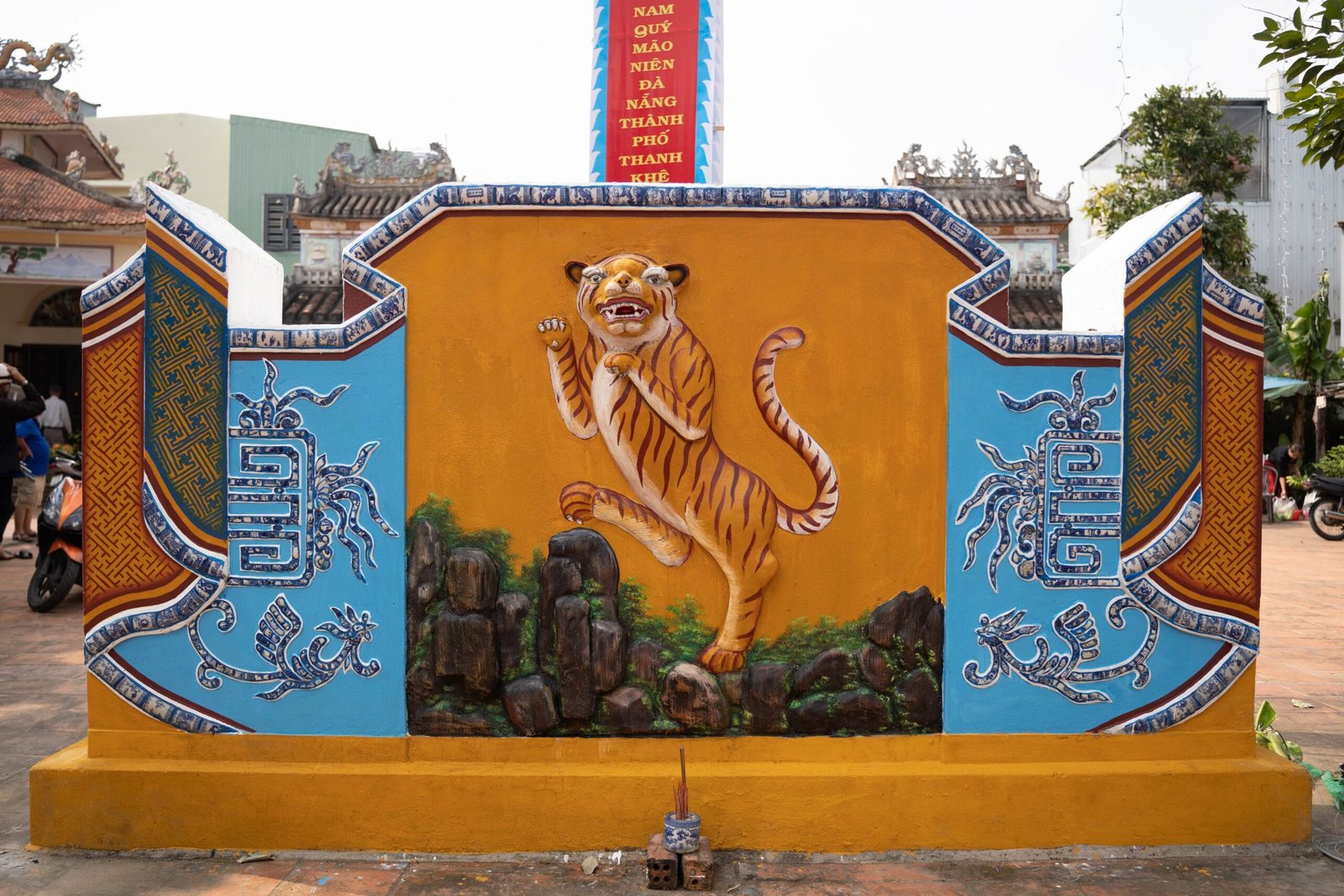Thac Gian Temple
The Thac Gian Village Temple was constructed a long time ago, in the beginning the temple was built only with bamboo. Under the reign of Emperor Minh Mang, it was refurbished with wood and a thatched roof.
According to old documents, the village of Thac Gian held a different name then, with a variety of pronunciation, an d was one of the earlier settlement of the region, being foramlly established in the middle of the XVth Century.
In the 7th Year Tu Duc (1854), the temple was rebuilt again with bricks, tiled roof and continue to be renovated in the 3rd year Duy Tan (1909), the 1st Year of Khai Dinh (1916), both funded by contributions of the village’s residents and in 2009 from the city of Dan Nng’s budget of 4 billion VND.
The first person credited with the guidance of the original settlers from the North here was Mr. Huynh Van Phuoc. After that, the predecessor of the original families of: Nguyen, Le, Ngo, Pham, Truong, Tran began cultivating the land and develop the village of Thac Gian to prosperity.
In the past, Thac Gian was a sprawling village. Up until the XIXth Century, its limit were: To the east was Xuan Dan Village on the Bay of Da Nang and to the south were the villages of Binh Thuan, Lien Tri (present day the wards of Eastern and Western Hoa Thuan , Hai Chau District).
The Yin Yang tiles, the roof edges decorated with twin dragons seeking the moon made of porcelain with corners garnished by statuettes of turtles and phoenixes. The periphery is decorated with Hue’s porcelain dishes. The temple possess two connected main buildings, the front and the back.
The Front hall was wider, with four sets of roof scaffolding, dividing it into two main areas, held up by five rows of six pillars on top of two main lodestones, an octagon on top and an oval at the bottom.
The Back hall was built from brick and mortar, with a high, arching ceiling. This is the place where the village worship the Village Guardian (Thanh Hoang) and General Nguyen Phuc.
A point of interest in the courtyard is on both sides of the main partition, there are a pair of brick elephants facing the main hall. On the Northeast side of th eTemple is a shrine and at the back of the hall there is a reliquary built from brick and wood with the same tiled roof and floor as the main hall.
This is the place where village elders held meeting. On both sides of the hall the delegates arranged themselves according to age and rank. This is also the area where ceremonial preparation take place. After the correct ceremonies was conducted, it is also where village feasts takes place.
Cookhouse: is the main kitchen of the village temple. The cookhouse is situated on the left side of the reliquary and is built from brick and tile.
Well: The well was dug right next to the cookhouse. In the past this was the first, deepest and only well of the village, serving not only the temple but also provide water to the village as a whole. According the the elders of the village, this well is one of the three oldest well of the Binh Thoi Ha region, the other two are Bong well (in Binh Thuan village – now Binh Hien ward, Hai Chau District); and the well at Tu Van Pagoda (now in vinh Trung ward, Thanh Khe District).
Across the tides of history, Thac Gian Temple is one of the rare temples in Da Nang which still held on to its valuable relics: 18 offical commendations and 38 offical documents from the Later Le and Nguyen Dynasty, with its unique style and appearance. Among which the earliest relic is from the 7th Year of Minh Mang5 (1826) and the latest is from the 10th year of Bao Dai (1935).
In the past, Thac Gian Temple is where many traditional festivals and ceremonies of the village.
On the 27th of August 2007 Thac Gian Temple was recognized as a National Heritage site by the Ministry of Culture and Sport and the Village temple festival was once again hosted.
Thac Gian temple is now located at Chinh Gian ward, Thanh Khe District, Da Nang City. To reach the temple, we go to Cai Lang junction (at the corner of Le Duan, Ly Thai to and Dien Bien Phu), head towards alley 478 Le Duan, and go for another 300 m. the temple is within the city limit so can be reache by most vehicles.
